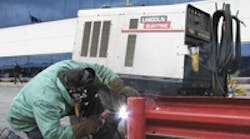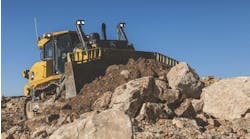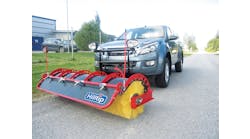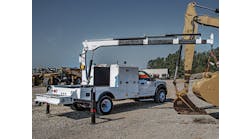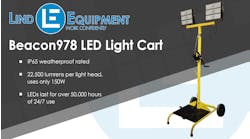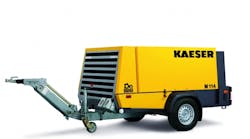Engine-driven welders are generally used when electric power isn’t available for arc welding. Usually these are outdoor applications. However, engine-drive welders are often used for indoor applications when it is not convenient to supply power to electric “plug-in” arc welders.
The basic considerations when choosing an engine-driven welder are:
- Application
- Engine Type
- Portability
- AC Generator Power
Application
When selecting an engine drive, the first thing to consider is the application. Ask yourself these five questions:
- Is this new construction or a repair job? Also, what is the size of the project?
- Is there a particular welding process you would like to use? You may want to stick with a process with which you feel most comfortable, or there may be a certain process required on the job.
- Is this a pipe welding project? The equipment chosen needs to produce an arc suitable for this type of work.
- Will the job require arc gouging? Arc gouging is repair work usually done in industrial jobs.
- What type of material needs to be welded? Most of the time the material will be a common mild steel plate. However, if it’s aluminum, the welding will require different equipment.
- When welding indoors always use proper ventilation.
Engine Type
Diesel, gasoline or liquid propane gas (LPG) are the choices. A diesel engine offers better fuel economy than a gasoline engine, and diesel fuel does not ignite as easily as gasoline. Another consideration for large jobs is whether the fuel is being supplied at the job site. If so, it is usually diesel, but whatever the fuel, the cost savings will usually determine the engine choice.
Gasoline engines are sometimes preferred in cold weather climates because they start more easily without extra starting aids, such as ether start kits and winterized fuel for colder weather.
LPG is much less common, but becomes an important alternative choice when diesel and gasoline exhaust emissions are not permitted for indoor applications.
Portability
Sometimes the need for portability will be the main factor in equipment selection. If an engine-driven welder needs to be carried or lifted to a work area, having a small gasoline stick welder will normally be the best answer.
AC Generator Power
AC power is sometimes required on the jobsite for grinding welds or lighting when working at night. Generally, 3,000 watts of AC generator power is plenty of power for these applications. Ground Fault Circuit Interrupters (GFCIs) are recommended and may be required. Powering an AC TIG welder or plasma cutter will require more wattage – typically 8,000 watts minimum.
For more information on welding applications and products, visit www.lincolnelectric.com.
